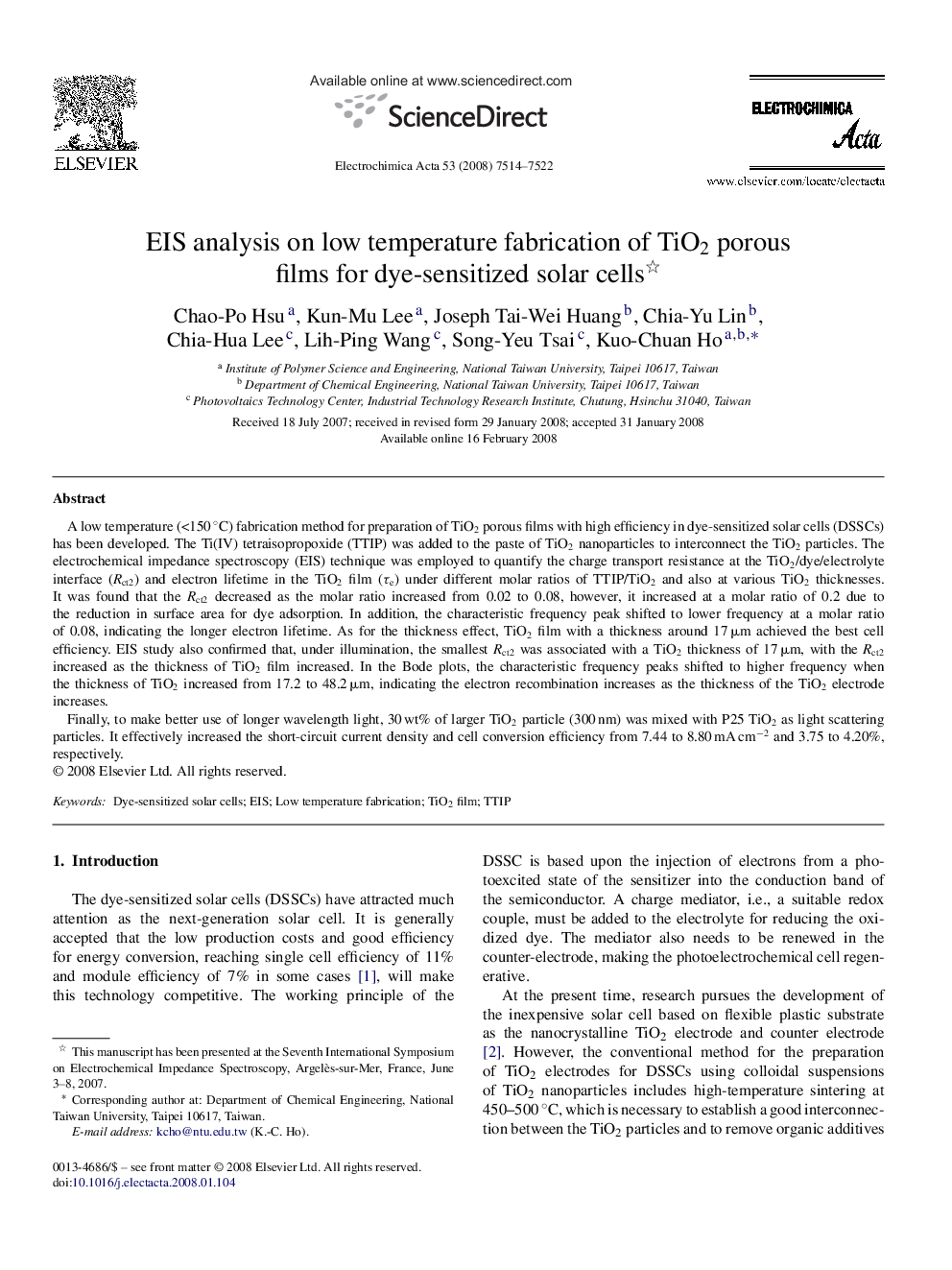| کد مقاله | کد نشریه | سال انتشار | مقاله انگلیسی | نسخه تمام متن |
|---|---|---|---|---|
| 195061 | 459805 | 2008 | 9 صفحه PDF | دانلود رایگان |

A low temperature (<150 °C) fabrication method for preparation of TiO2 porous films with high efficiency in dye-sensitized solar cells (DSSCs) has been developed. The Ti(IV) tetraisopropoxide (TTIP) was added to the paste of TiO2 nanoparticles to interconnect the TiO2 particles. The electrochemical impedance spectroscopy (EIS) technique was employed to quantify the charge transport resistance at the TiO2/dye/electrolyte interface (Rct2) and electron lifetime in the TiO2 film (τe) under different molar ratios of TTIP/TiO2 and also at various TiO2 thicknesses. It was found that the Rct2 decreased as the molar ratio increased from 0.02 to 0.08, however, it increased at a molar ratio of 0.2 due to the reduction in surface area for dye adsorption. In addition, the characteristic frequency peak shifted to lower frequency at a molar ratio of 0.08, indicating the longer electron lifetime. As for the thickness effect, TiO2 film with a thickness around 17 μm achieved the best cell efficiency. EIS study also confirmed that, under illumination, the smallest Rct2 was associated with a TiO2 thickness of 17 μm, with the Rct2 increased as the thickness of TiO2 film increased. In the Bode plots, the characteristic frequency peaks shifted to higher frequency when the thickness of TiO2 increased from 17.2 to 48.2 μm, indicating the electron recombination increases as the thickness of the TiO2 electrode increases.Finally, to make better use of longer wavelength light, 30 wt% of larger TiO2 particle (300 nm) was mixed with P25 TiO2 as light scattering particles. It effectively increased the short-circuit current density and cell conversion efficiency from 7.44 to 8.80 mA cm−2 and 3.75 to 4.20%, respectively.
Journal: Electrochimica Acta - Volume 53, Issue 25, 30 October 2008, Pages 7514–7522